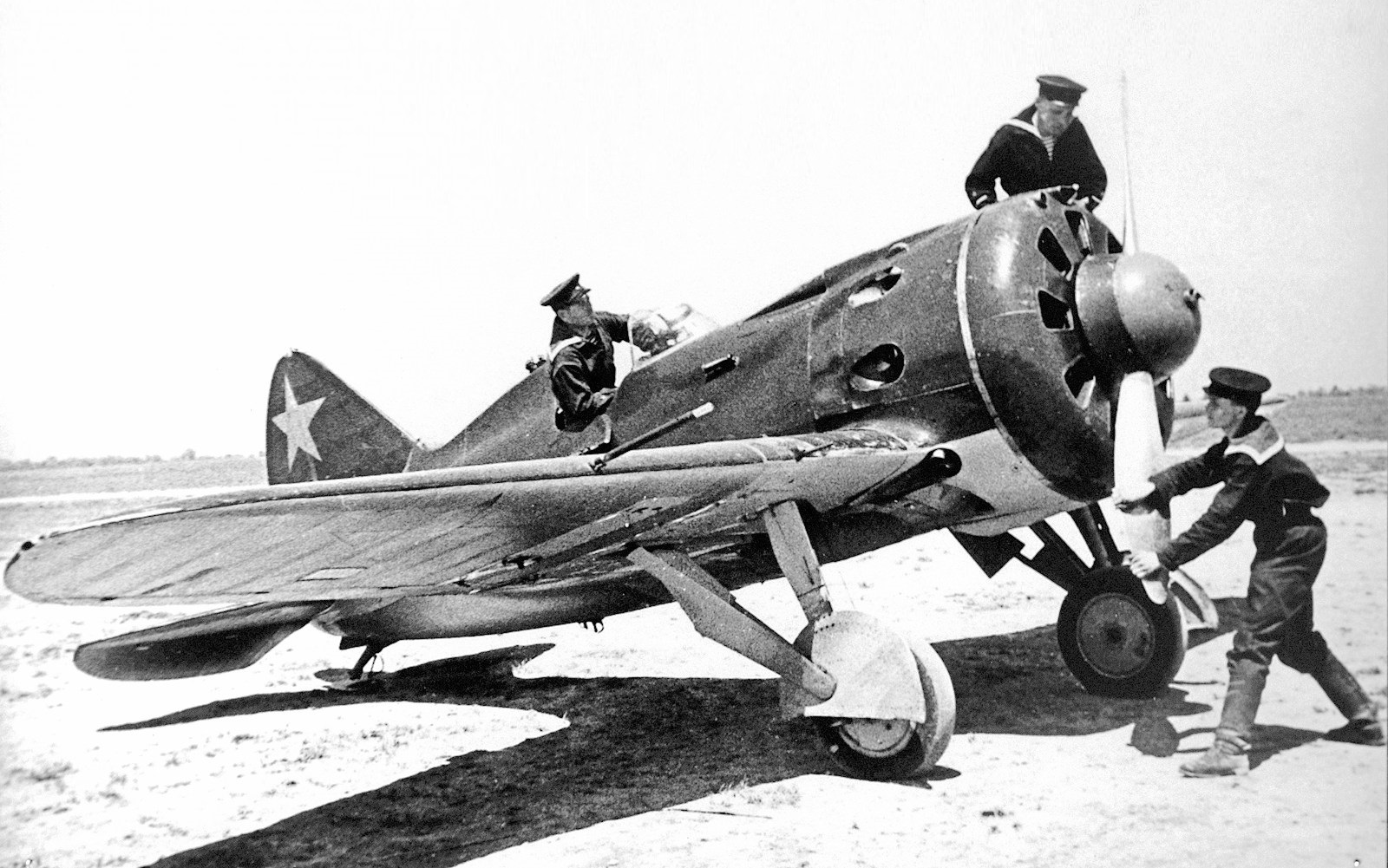On May 9, as Russia celebrates Victory Day, a Polikarpov I-16 combat aircraft from the Soviet era — the sole aircraft that saw action in World War II — will be seen in flight over Moscow.
The only Soviet I-16 combat fighter in Russia, which participated in the battles of the Great Patriotic War and was refurbished for participating in the 79th anniversary celebration of the Soviet victory, will take to the skies.
“This year, the Soviet I-16 will be the only historical combat aircraft that will rise to the sky as part of the “Immortal Aviation Regiment” campaign. The restoration of the legendary fighter is a long-term painstaking work of a large number of patriots and enthusiasts, ranging from search teams to aviation enterprises of our country,” Boris Osyatinsky, President of the Winged Memory of Victory Foundation, told reporters.
He told reporters that parts of this combat aircraft were found two kilometers northwest of Lake Kokkojärvi in Karelia in June 1992. The aircraft was likely a part of the 155th Fighter Aviation unit and made an emergency landing in the area in the summer of 1941 during WW2.
“Fragments of the wooden fuselage, center plane, chassis, consoles, part of the plumage and M-62 engine were found… Plates marking the series and numbers of the left and right consoles indicated that these structural elements were allegedly produced at the Gorky Plant named after S. Ordzhonikidze – in Novosibirsk at the aviation plant named after V. P. Chkalov,” said Osyatinsky.
🇷🇺 Russia's only Soviet I-16 fighter, which took part in the battles of the World War II and was restored for the 79th anniversary of Victory, took to the skies and will take part in the parade in Novosibirsk on May 9.https://t.co/BxZG0P96e1 pic.twitter.com/UetoN2MK7D
— Zlatti71 (@Zlatti_71) May 8, 2024
In 1992, participants of the Winged Memory of Victory project transported fragments of the I-16 aircraft to Novosibirsk, where it underwent restoration after a long search for design documentation.
The flight of this aircraft over Moscow on Victory Day will bring back memories of the victory of the Allies over Nazi Germany. The Soviet Union lost the largest number of troops in the battle. In the two years of war against Ukraine, Russian President Vladimir Putin has used the day to position his country as destroyer of Nazism.
The I-16 Combat Jet Was A Soviet Marvel
The I-16 high-speed fighter monoplane was developed in the design bureau of Nikolai Polikarpov and took its first flight in 1933.
The I-16 was a revolutionary single-engine, single-seat fighter aircraft from the Soviet Union that “introduced a new vogue in fighter design” as it was the first low-wing cantilever monoplane fighter with retractable landing gear.
The design of the aircraft sought to maximize mobility for air combat while still being a fast-moving fighter. The I-16 was small “like a fly,” and represented the ideal of a fast aircraft that was also particularly good at aerobatics, setting it apart from all biplanes.
In 1934, the Red Army Air Force began using the I-16 fighter. Throughout its seven-year production run, the aircraft had over ten upgrades, all of which included improvements to its weaponry, an enhancement in engine power, and a gradual rise in mass while maintaining its overall size. Though incredibly agile, it was very challenging to manage.
The aircraft was deployed in several combat zones, including the Second Sino-Japanese War, the Spanish Civil War, the Winter War between the Soviet Union and Finland, etc. The aircraft performed exceptionally well in all these battles. However, it is the Soviet war against Germany that remains the most noteworthy of all battles that saw the I-16 in action.
Nazi forces surprised the Soviet Union with a strong offensive on June 22, 1941. Under the code name “Operation Barbarossa,” three million Axis soldiers invaded the Soviet Union on three fronts. The first strike came from more than 1200 Luftwaffe planes, which attacked sites so quickly and fiercely that around 2,000 Soviet aircraft were destroyed on the ground in just two days.
The I-16 formed the backbone of the Soviet Air Force but was found to be inferior to the German aircraft. Soviet aircraft of the era were generally inferior to those of their adversaries, with the I-16 being no exception. It had a maximum speed of 280-290 mph (450-470 kilometers/h) as opposed to the German Messerschmitt Bf 109E’s 350 mph (570 kilometers/hour).

Several Soviet pilots took drastic measures in their last-ditch effort to protect their motherland. On the first day of what Soviet citizens eventually came to refer to as “The Great Patriotic War,” 15 Soviet fighter pilots used the “taran” or “battering ram” maneuver to bring down German planes. This essentially entailed smashing their aircraft into the enemy jets to destroy them.
Approximately 40% of the Soviet fighter inventory, or 1,635 Polikarpov I-16 aircraft, were in service at the start of hostilities. By the end of June 1941, only 873 remained, with about 100 of them requiring repair.
🇷🇺 Russia's only Soviet I-16 fighter, which took part in the battles of the World War II and was restored for the 79th anniversary of Victory, took to the skies and will take part in the parade in Novosibirsk on May 9.https://t.co/BxZG0P96e1 pic.twitter.com/UetoN2MK7D
— Zlatti71 (@Zlatti_71) May 8, 2024
Despite these obstacles, many Red Army Air pilots attained “ace” status with five enemy kills or more. In a dogfight, the I-16’s ability to make a sharp turn was considered remarkable.
It could also withstand a great deal of damage. Later aircraft variants were considerably more deadly when equipped with two 7.62 mm ShKAS machine guns in the top cowling and two 20 mm (0.787 in) ShVAK wing-mounted cannons.
Vladimir Barsuk, Honored Test Pilot of the Russian Federation, told RIA Novosti, “How they fought is still not quite clear to me. Very little fuel – for 40 minutes of gasoline. It is necessary to find the enemy, shoot him down in these conditions, and also find your airfield and come back. Very bad view, there was no automation — there was not even an air horizon. To land, the aircraft would have needed to leap into the stream. Despite all that, the combat task was completed.”

The Mga railway station attack on March 12, 1942, exemplified the I-16’s potency as a ground attack weapon. In that operation, a flight of 18 I-16s buzzed the station at zero feet from the south in an attempt to mislead the opposing flak gunners. These jets then divided into two groups of nine and circled back to attack the trains full of Wehrmacht soldiers, weaponry, and ammo from two different angles. The cramped carriages and wagons were hit by rockets, cannon fire, and machine gun fire, which resulted in explosions and fires that burned for hours.
Additionally, Soviet pilots were among the first to dismantle German bomber formations using rockets. Eight German Ju-88 aircraft flying into Sevastopol were reportedly attacked by five Black Sea Fleet Air Force Polikarpov I-16s in November 1941. Four I-16s launched all 24 of their rockets at the bombers. One aircraft caught fire and swooped down into the ocean. The others escaped after setting off their bombs over open terrain.
By the end of 1943, the Polikarpov I-16 had been supplanted in service by more modern Soviet aircraft like the Lavochkin LaGG-3 and Yak-7. It was the I-16’s key role in the Soviet victory over Nazi Germany that is remembered to this day.
- Contact the author at sakshi.tiwari9555 (at) gmail.com
- Follow EurAsian Times on Google News




